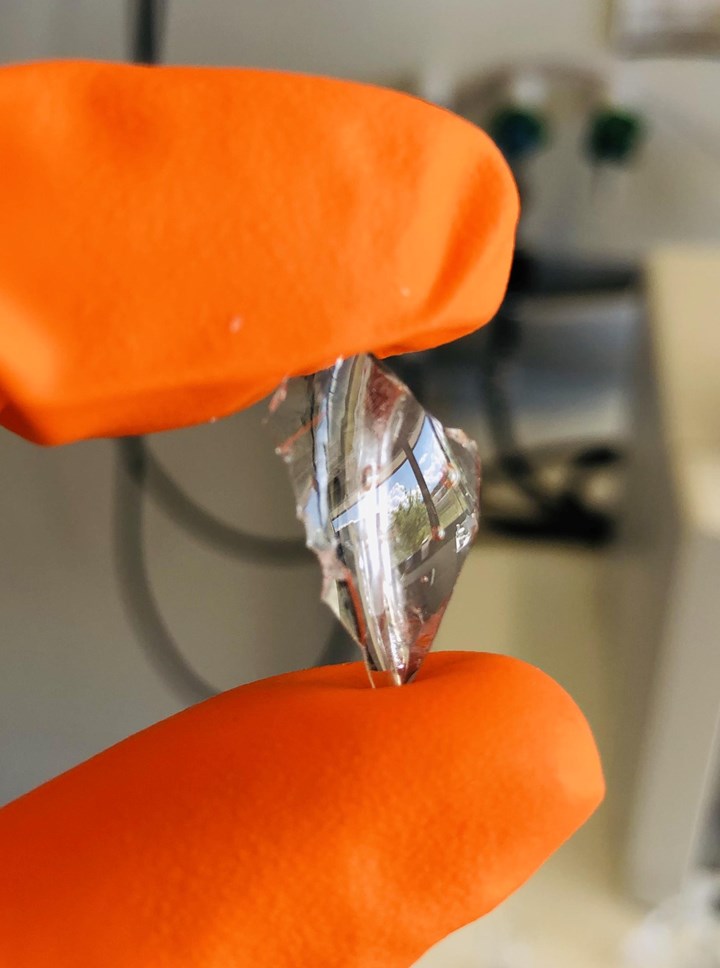PET-Like Bioplastic from Biomass
Switzerland’s EPFL School of Basic Sciences have developed a biomass derived plastic that is similar to PET.

We have been reporting on bioplastics derived from a variety of natural sources as contenders particularly for the five major commodity thermoplastics—PE, PP, PS, PVC, and PET. One of the latest is a new biomass-derived plastic similar to PET, that meets the criteria for replacing several current plastics while also being more environmentally friendly has been developed by scientists from public Swiss research university The which specializes in natural sciences and engineering.
According to the researchers, led by professor Jeremy Luterbacher at EPFL’s School of Basic Sciences, producing competitive biomass-based plastics is not straightforward. He notes that there is a reason that conventional plastics are so widespread, as they combine low-cost, heat stability, mechanical strength, processability, and compatibility – features that any alternative plastic replacements must match or surpass. And so far, the task has been challenging.
Says Luterbacher, “We essentially just ‘cook’ wood or other non-edible plant material, such as agricultural wastes, in inexpensive chemicals to produce the plastic precursor in one step. By keeping the sugar structure intact within the molecular structure of the plastic, the chemistry is much simpler than current alternatives.” The technique is based on a discovery that Luterbacher and his colleagues published in 2016, where adding an aldehyde could stabilize certain fractions of plant material and avoid their destruction during extraction. By repurposing this chemistry, the researchers were able to rebuild a new useful biobased chemical as a plastic precursor.

Says Lorenz Manker, the study’s first author, “By using a different aldehyde – glyoxylic acid instead of formaldehyde – we could simply clip ‘sticky’ groups onto both sides of the sugar molecules, which then allows them to act as plastic building blocks. By using this simple technique, we are able to convert up to 25% of the weight of agricultural waste, or 95% of purified sugar, into plastic.”
The well-rounded properties of these plastics could allow them to be used in applications ranging from packaging and textiles to medicine and electronics. The researchers have already made packaging films, fibers that could be spun into clothing or other textiles, and filaments for 3D-printing.
Says Lutenbacher, “The plastic has very exciting properties, notably for applications like food packaging. And what makes the plastic unique is the presence of the intact sugar structure. This makes it incredibly easy to make because you don’t have to modify what nature gives you, and simple to degrade because it can go back to a molecule that is already abundant in nature.”
This new bioplastic is now in the process of being commercialized by Bloom Biorenewables, a spin-off from EPFL. They are working with potential customers to field-test the material for various applications.
Related Content
-
BASF Highlighting How They 'Make, Use and Recycle Future Solutions'
NPE2024: BASF is using its proprietary computer-aided engineering tool Ultrasim when designing for sustainability in a broad range of industries.
-
Cork Compounds for High Strength, Low Weight Performance Composites
Amorim Cork Solutions enable bio-based designs for injection molded products.
-
At NPE2024, Follow These Megatrends in Materials and Additives
Offerings range from recycled, biobased, biodegradable and monomaterial structures that enhance recyclability to additives that are more efficient, sustainable and safer to use.








